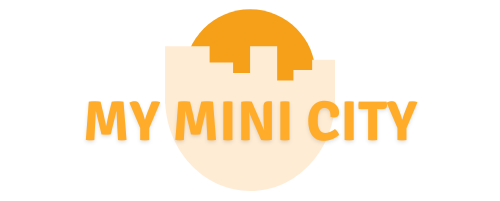Teachers face a new challenge. With advancements in artificial intelligence, detecting AI-generated essays becomes increasingly difficult. Students now have access to tools that produce essays with a single click.
This raises concerns about academic integrity. How can teachers distinguish between an AI-generated essay and one written by a student struggling to meet a deadline? There are key signs that can help.
Signs of AI-Generated Essays

AI-generated essays often display certain characteristics. The structure is usually flawless. AI tools follow grammatical rules strictly. Sentences are well-formed. Punctuation is always accurate. While this might seem like a positive trait, it can actually be a red flag. Students typically make minor errors. A perfectly written essay might indicate that AI was involved.
You can use tools like Zero GPT to analyze text. Such tools help identify AI-generated essays. By comparing the style, structure, and vocabulary, these tools provide an indication of whether AI was used. It’s an effective way to catch AI-generated work.
AI-generated essays typically lack depth. The content might be factual and coherent, but it may not explore ideas deeply. AI tools can summarize information, but they struggle with critical thinking. Essays written by students, even sleep-deprived ones, typically show personal insight. They include unique perspectives. AI-generated work tends to be more generic.
Another clue is the use of vocabulary. Artificially generated essays might use advanced vocabulary consistently. The words are often accurate but may seem out of place. Students might use complex words occasionally, but their use of language is usually more varied.
Recognizing Student-Written Essays
Sleep-deprived students might struggle with coherence. Their essays might have inconsistent structure. Ideas might be presented in a disorganized manner. This can be a sign that the student wrote the essay under pressure.
Another indicator is the use of informal language. Tired students might slip into a more conversational tone. They might use slang or make simple grammatical errors. This contrasts with the polished language found in AI-generated essays.
Personal voice is another clue. Students often express opinions or include personal anecdotes. Their writing reflects their thoughts and emotions. AI-generated essays usually lack this personal touch. They stick to facts and avoid subjective statements.
Sleep-deprived students might also struggle with repetition. They might repeat ideas or phrases unintentionally. This happens when a student’s focus wanes due to fatigue. AI-generated essays tend to avoid repetition. The content remains structured and varied.
Comparing Content Depth and Relevance

AI-generated essays often excel in delivering information. However, they might fall short in analyzing or interpreting that information. Students, even when tired, often make an effort to connect ideas. They might draw conclusions or provide a unique viewpoint. AI tools, on the other hand, typically stick to summarizing facts.
Essays written by students might go off-topic occasionally. A tired student might include irrelevant information due to a lack of focus. This can lead to a less cohesive essay. AI-generated essays typically stay on topic. They maintain a consistent focus throughout.
The relevance of sources can also provide clues. AI tools frequently use a wide range of sources. However, they might not always choose the most relevant ones. Students might choose sources based on their understanding of the topic. Even if they are tired, their source selection typically reflects their research process.
Patterns in Writing Style
AI-generated essays often have a consistent writing style. The tone remains uniform throughout. This can make the essay seem monotonous. Students, especially those who are tired, might have an inconsistent style. The tone might shift between formal and informal. This inconsistency can be a sign of a student-written essay.
Another difference is sentence length. AI-generated essays often use sentences of similar length. The rhythm is steady and predictable. Students might vary sentence length more. They might use shorter sentences for emphasis or longer ones to explore complex ideas.
Teachers can also look at the use of transition words. AI tools often use transitions effectively. However, they might overuse them, making the essay feel mechanical. Students might use transitions more naturally, even if they are tired. The flow of their writing reflects their thought process.
Examining the Argument Structure

AI-generated essays often present arguments in a clear and logical way. The structure is usually flawless. However, this might also be a sign that the essay was not written by a student. Tired students might struggle to maintain a clear argument. Their essays might have gaps in logic or sudden shifts in focus.
Students often include personal opinions in their arguments. They might use phrases like “I believe” or “In my opinion.” AI tools avoid such phrases. They present arguments in an objective way, focusing on facts rather than opinions.
Another clue is the use of evidence. AI-generated essays often include well-cited evidence. However, the evidence might be generic. It might not be directly related to the argument. Students might choose evidence more carefully, even if they are tired. Their choice of evidence reflects their understanding of the topic.
Looking at Formatting and Presentation
Formatting can also provide clues as artificially generated essays often have perfect formatting. The headings, font sizes, and margins are consistent. Tired students might make formatting errors. They might forget to include headings or use inconsistent font sizes.
Presentation is another factor. AI-generated essays are usually well-organized. The paragraphs are neatly structured. Tired students might struggle with organization. Their paragraphs might be uneven or disjointed.
Teachers can also consider the overall presentation of the essay. AI-generated essays often look polished. The text is clean and well-spaced. Student-written essays might show signs of haste. The text might be crammed or poorly spaced.
Using Tools and Techniques for Detection

Tools that detect AI help analyze the text for signs of artificil involvement. They compare the writing style, vocabulary, and structure. This provides an indication of whether AI was used.
Another technique is to ask students to explain their essays. A student who wrote the essay can usually explain their arguments. They can discuss their thought process. If a student struggles to explain their essay, it might be a sign that AI was involved.
Teachers can also compare the essay to previous work. If the style or quality differs significantly, it could indicate that AI was used. Tired students might produce essays of lower quality. However, the style usually remains consistent with their previous work.
Addressing the Issue of AI in Education
The use of AI tools in education raises important questions. Teachers need to adapt to the changing landscape. Detecting artificially generated essays is part of the challenge. However, the focus should also be on teaching students about academic integrity. Students need to understand the value of their own work.
Encouraging students to take pride in their work is essential. Teachers can provide support and resources to help students manage their workload. This reduces the temptation to use AI tools to complete assignments.
Open discussions about artificial intelligence in education can also help. Students should be aware of the implications of using AI tools. They need to understand the importance of original work. By fostering a culture of integrity, teachers can help students develop their skills and confidence.
Conclusion
Teachers face the challenge of distinguishing between AI-generated essays and those written by students. By understanding the differences in structure, depth, style, and presentation, teachers can identify artificial intelligence involvement. AI detectors provide additional support. However, the focus should remain on encouraging students to produce original work.
Addressing the issue of artificial intelligence in education requires a balanced approach, combining detection with education and support.

